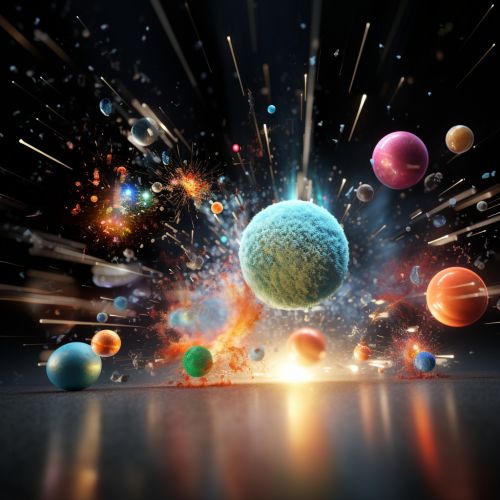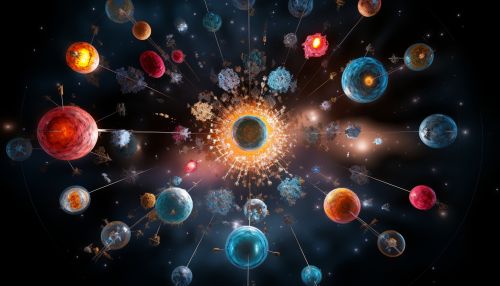Elementary particle
Introduction
Elementary particles, also known as fundamental particles, are the smallest known building blocks of the universe. They are not composed of any other particles and cannot be broken down further. These particles serve as the foundation for all matter and forces in the universe.
Classification
Elementary particles are classified into two main categories: fermions and bosons. Fermions are particles that follow the Pauli exclusion principle, which states that no two fermions can occupy the same quantum state simultaneously. Bosons, on the other hand, do not follow this principle and can occupy the same quantum state.


Fermions
Fermions are further divided into two types: quarks and leptons. Quarks are particles that interact through all four fundamental forces: strong, weak, electromagnetic, and gravitational. Leptons, on the other hand, do not interact through the strong force.
Quarks
Quarks come in six types, or "flavors": up, down, charm, strange, top, and bottom. Each quark carries a fractional electric charge. Quarks are unique in that they are the only particles that interact through the strong force, which is responsible for holding atomic nuclei together.
Leptons
Leptons are particles that do not interact through the strong force. They come in six flavors: electron, muon, tau, electron neutrino, muon neutrino, and tau neutrino. Each lepton carries an integer electric charge, with the exception of neutrinos, which are electrically neutral.
Bosons
Bosons are particles that carry forces. They are classified into four types: photons, gluons, W and Z bosons, and Higgs bosons.
Photons
Photons are particles of light and carry the electromagnetic force. They are massless and travel at the speed of light in a vacuum.
Gluons
Gluons are particles that carry the strong force. They are responsible for holding quarks together inside protons and neutrons.
W and Z Bosons
W and Z bosons are particles that carry the weak force. This force is responsible for certain types of radioactive decay.
Higgs Boson
The Higgs boson is a particle that gives other particles their mass. It was discovered at the Large Hadron Collider in 2012.
Theoretical Particles
In addition to the known elementary particles, there are several theoretical particles that have not yet been observed. These include gravitons, which are hypothesized to carry the gravitational force, and supersymmetric particles, which are predicted by certain extensions of the standard model of particle physics.
